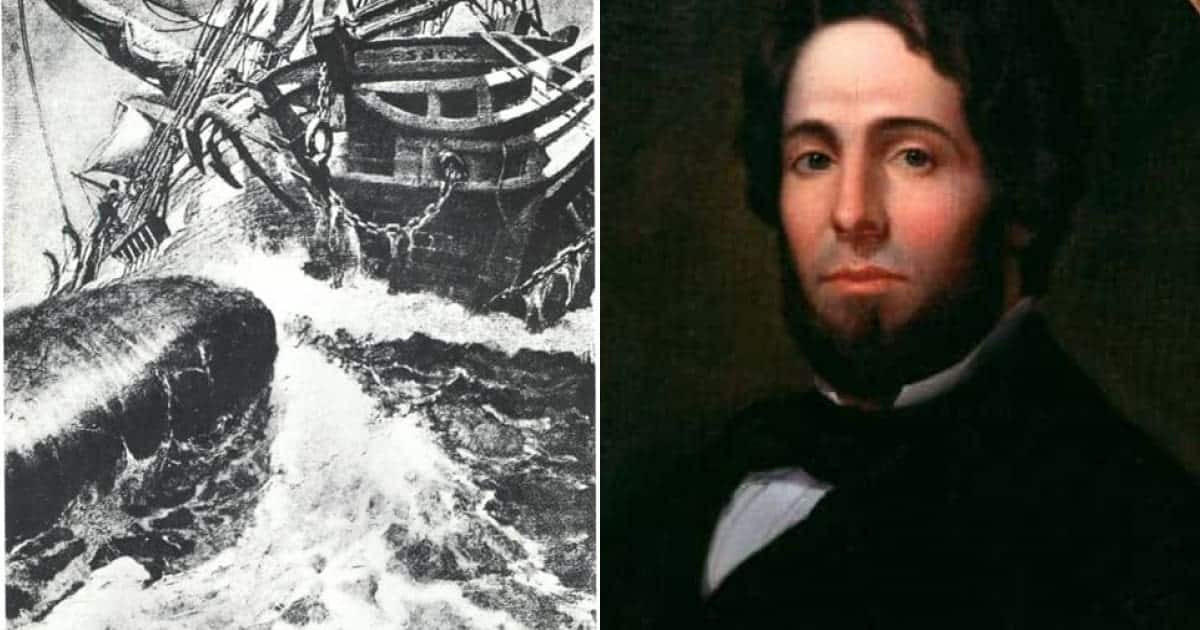Before trying his hand at writing, the young Herman Melville’s brief career on the sea would influence his later works. Joining the whaling vessel the Acushnet in 1840, his chance encounter with William Henry Chase – the son of Owen Chase – would cement his reputation as one of the great American authors. The younger Chase handed Melville a copy of his father’s memoir that detailed his horrific survival at sea after a sperm whale attacked and sank the Essex during a whaling voyage in 1820.
Stranded thousands of miles away from land with no provisions, the crew piled into small twenty-five-foot hunting boats as their vessel sank. When other whaling ships rescued less than half of the Essex‘s skeleton crew three months later, the survivors recounted a gruesome tale of starvation, cannibalism, and murder. The sinking of the Essex inspired the final scene of Herman Melville’s most celebrated novel, Moby Dick. However, the author didn’t include the horrifying events that followed, recorded in Owen Chase’s memoir in stomach-churning detail.
The Essex spent twenty years on the sea before embarking on her final voyage in August 1819. Manned by a twenty-one-man crew, including twenty-nine-year-old Captain George Pollard and twenty-three-year-old First Mate Owen Chase, the Essex left Nantucket for the South Pacific. The doomed voyage encountered misfortune from the start. A storm in the Gulf Stream almost sank the Essex. Rough sea conditions put the trip behind schedule. After five weeks at sea, the Essex finally rounded the tip of South America in January 1820. One man abandoned the ship, but the rest of the crew had a successful season.

Reaching the South Pacific, the men of the Essex hunted whales near the border of modern-day Ecuador until October 1820. Encountering another whaling vessel, the crew learned of another fertile hunting ground about 3,000 miles southwest of their location. Even though the men feared stories of cannibal tribes that lived on the Pacific Islands, Pollard and Chase hoped to catch more whales. When they reached the promised area of plenty, there were no whales in sight. On November 20, 1820, the disgruntled crew finally spotted a pod of sperm whales.

The excited crew loaded into their whaling boats, splitting into three groups of six, leaving two men behind on the vessel. After their small boat sustained damage on the hunt, Owen Chase and his team boarded the Essex to repair it. As they hurriedly patched up their hunting boat, the men spotted a large male sperm whale approach the Essex. As the rest of the crew in the remaining two hunting boats returned, they watched in horror as the whale attacked the Essex.

